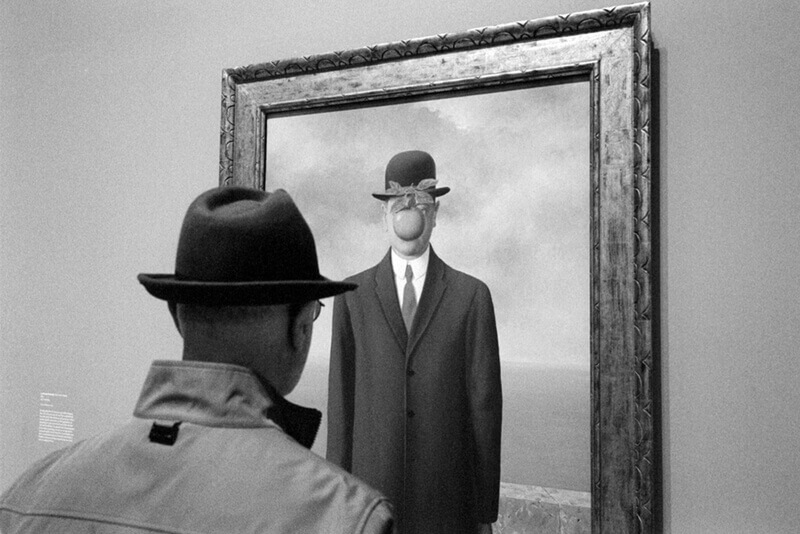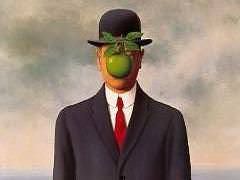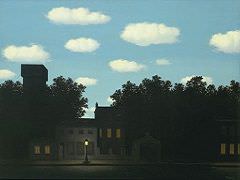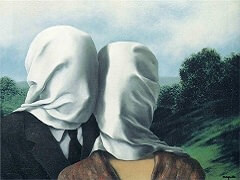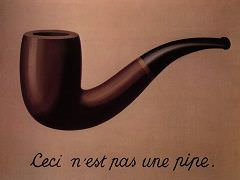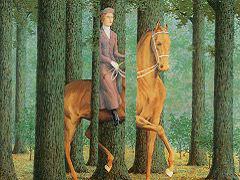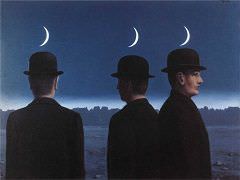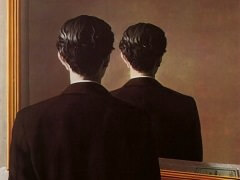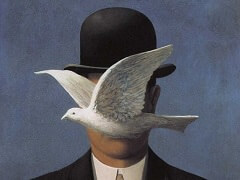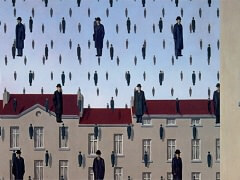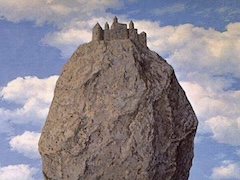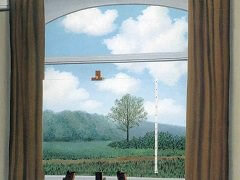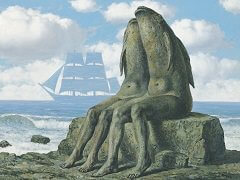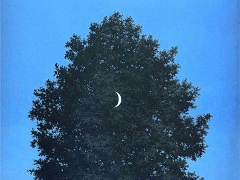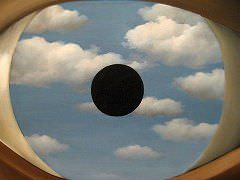The Son of Man, 1946 by Rene Magritte

Magritte painted The Son of Man as a self-portrait. The painting consists of a man in an overcoat and a bowler hat standing in front of a short wall, beyond which is the sea and a cloudy sky. The man's face is largely obscured by a hovering green apple. However, the man's eyes can be seen peeking over the edge of the apple. Another subtle feature is that the man's left arm appears to bend backward at the elbow.
About the painting, Magritte said:
At least it hides the face partly. Well, so you have the apparent face, the apple, hiding the visible but hidden, the face of the person. It's something that happens constantly. Everything we see hides another thing, we always want to see what is hidden by what we see. There is an interest in that which is hidden and which the visible does not show us. This interest can take the form of a quite intense feeling, a sort of conflict, one might say, between the visible that is hidden and the visible that is present."
At the start of 1946, Margritte was painting in both his realist style and his impressionist style. Some of his works, like The Son of Man, were already headed toward more extreme colors. This extreme style, closer to some of Van Gogh's paintings, would accelerate in late 1947 when he was invited to hold his first solo exhibition in Paris at the Galerie du Faubourg in May 1948. Today, along with Persistence of Memory by Salvador Dali, The Son of Man has become the most iconic image of Surrealism Movement.
